
Coming down with a dose of Witchcraft -– a Halloween special
Witches were a real presence in early modern lives. Many elderly women healers, as well as a range of other people, risked accusations of witchcraft. Indeed new midwives, for example, had to swear an oath that they would not use ‘witchcraft, charms, sorcery, invocation or other prayers’ in her practice. Early modern discussions about witches also discussed how people needed to be cured of witchcraft, as though being a witch was a medical condition needing a cure.
This is because in humoral terms women could become susceptible to diabolic thoughts through a build up of the humour melancholy in their bodies. In the humoral system the mind and body were envisaged as interconnected, and so an excess of any humour would affect thought patterns. More than this, too much melancholy in the system was thought to attract the Devil to the sufferer. This was explained by Robert Burton, the author of the most well-known treatise on melancholy, The Anatomy of Melancholy (1621), who believed that the Devil was attracted to a body that contained a lot of black bile. Burton even called melancholy, ‘Balneum Diaboli’ (‘the Devil’s Bath’). ‘This humour’, he wrote, ‘invites the Devil to it, wheresoever it is in extremity, and, of all others, melancholy persons are most subject to diabolical temptations and illusions’.1 Perhaps the most famous book on witchcraft in the period was Reginald Scot’s Discovery of Witchcraft (1584). Here, as Jacqueline Eales has shown, Scot claimed that women were particularly at risk of being accused of the crime ‘upon the stopping of their monthly melancholic flux or issue of blood’, so post-menopausally. Scot argued that the lack of menstrual bleeding made older women prone to the vain imagination that they could command the Devil’.2 The build up of an excess of black bile in the body, he supposed, resulted in evil thoughts and influences.
The book, A New Method of Rosie Crucian Physick has a chapter called ‘Medicines against Witchcraft’, which explained how to cure people who were afflicted with witchcraft and take away their powers.3 John Heydon wrote that he could show how to cure a sufferer of witchcraft despite the fact that ‘their bodies be possessed with evill spirits, that cause them to vomit up Needles, Thimbles, Pots, Glasses, Hair, and shreds of cloth, which by the Divil were conveyed into the body’.4 Heydon was sceptical about some of the feats he had heard reported about witches’ abilities, but offered the following cure:
Let one watch the party Suspected, when they go home to their house, and presently after, before any body goe into the house after him or her, let one pull a handful of the Thatch, or aTyle that is over the Door, and if it be a Tyle, make a good Fire, and heat it red hot therein, setting a Trivet over it; then take the parties Water [urine], if it be a Man, Woman, or Child, and poure it upon the red hot Tyle, upon one side first, and then on the other, and again put the Tyle into the Fire, and make it extremely hot, turning it ever and anon, and let no body come into the house in the mean time.5
If the witch’s house didn’t have a tiled roof, but only thatch, then instead you should:
then take a great handful thereof, and wet it in the parties Water, or else in common Water mixed with some Salt, then lay it in the Fire, so that it may molter and smother by degrees, and in a long time: setting a Trivet over it. Or else take two new Horse-shooes, heat them red hot, and nail one of them on theThreshold of the Door, but quench the other in the Urine of the party so bewitched, then set the Urine over the fire, and put the Horse-shooe in it, setting a Tryvet over the Pipkin or Pan wherein the Urine is.6
Heydon didn’t explain how you should account for the fact you were nailing a horseshoe on a witch’s threshold (the wooden plan in the door way which was placed there to stop the thresh or rushes on the floor from escaping out the door).
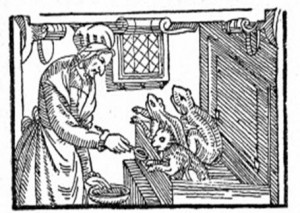
As well as performing stunts like vomiting needles, Heydon discussed how ‘Winds and Tempests are raised by Witches upon meer ceremonies of Medicines, and of poysons; with the examples also of other supernatural effects of unclean spirits, and of imagination.7 Significantly, perhaps, Pliny had written in his Natural History (28) that ‘They say that hailstorms and whirlwinds are driven away if menstrual fluid is exposed to the very flashes of lightning: that stormy weather too is thus kept away, and that at sea exposure, even without that menstruation prevents storms.8 This suggests once again there is a connection between the menopause and witchcraft: menstruating women can stop hailstorms but post-menopausal women can summon them.
As well as the effect of a build up of melancholy, other sorts of physical changes that a woman might have expected after menopause, such as osteoporosis causing the ‘dowager’s hump’ and tooth-loss, which in turn causes the face to cave in and so makes the nose to appear hooked, as well as the growth of facial hair, are all, as Laura Gowing has commented, stereotypical characteristics of the witch.9 Perhaps it is the case as Gowing has speculated that rather than witchcraft being an illness you could catch, that instead ‘in part, the stereotypes of witchcraft were fuelled by fears and hostility about age’.10
____________________________________________
For more on early modern menopause, see the chapter in my book Menstruation and the Female Body in Early Modern England (2013)
1 Robert Burton, The Anatomy of Melancholy, introduction by William H. Gass, 3 vols (New York: New York Review of Books, 2001), I: p. 200.
2 Jacqueline Eales, Women in Early Modern England, 1500- 1700 (London: University College London, 1998), p. 104.
3 John Heydon, A New Method of Rosie Crucian Physick (1658), p. 40. For a definition of Rosiecrucianism see http://en.wikipedia.org/wiki/Rosicrucianism
4 Heydon, A New Method of Rosie Crucian Physick (1658), p. 40.
5 Heydon, A New Method of Rosie Crucian Physick (1658), p. 43.
6 Heydon, A New Method of Rosie Crucian Physick (1658), pp. 43-4.
7 Heydon, A New Method of Rosie Crucian Physick (1658), p. 40.
8 Pliny, Natural History Books 28-32, trans by W. H. S. Jones (Cambridge MA and London: Harvard University Press, 1963), XXVIII, 77-83, pp. 55-9.
9 Laura Gowing, Common Bodies: Women, Touch and Power in Seventeenth-Century England (London: Yale University Press, 2003), p. 79; Lynn Botelho, ‘Old Age and Menopause in Rural Women of Early Modern Suffolk’, in Women and Ageing in British Society since 1500, ed. by Lynn Botelho and Pat Thane (Harlow: Pearson, 2001), pp. 43-65 (54–55).
10. Gowing, Common Bodies, p. 75.
© Copyright Sara Read, all rights reserved.
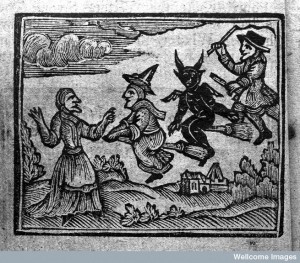
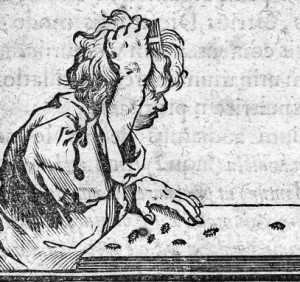
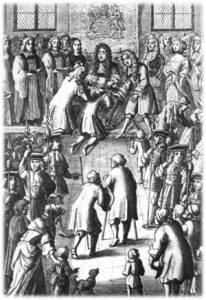
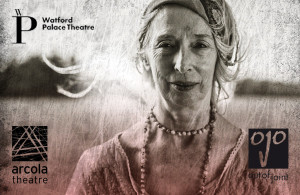
reminded of Mother Shipton.
Hi Julie, me too – I grew up near Mother Shipton’s cave, Sara